Global Ionospheric and Thermospheric Effects of the June 2015 Geomagnetic Disturbances: Multi-Instrumental Observations and Modeling
- PMID: 29938152
- PMCID: PMC5993339
- DOI: 10.1002/2017JA024174
Global Ionospheric and Thermospheric Effects of the June 2015 Geomagnetic Disturbances: Multi-Instrumental Observations and Modeling
Abstract
By using data from multiple instruments, we investigate ionospheric/thermospheric behavior during the period from 21 to 23 June 2015, when three interplanetary shocks (IS) of different intensities arrived at Earth. The first IS was registered at 16:45 UT on 21 June and caused ~50 nT increase in the SYM-H index. The second IS arrived at 5:45 UT on 22 June and induced an enhancement of the auroral/substorm activity that led to rapid increase of thermospheric neutral mass density and ionospheric vertical total electron content at high latitudes. Several hours later, topside electron content and electron density increased at low latitudes on the nightside. The third and much larger IS arrived at 18:30 UT on 22 June and initiated a major geomagnetic storm that lasted for many hours. The storm provoked significant effects in the thermosphere and ionosphere on both dayside and nightside. In the thermosphere, the dayside neutral mass density exceeded the quiet time levels by 300-500%, with stronger effects in the summer hemisphere. In the ionosphere, both positive and negative storm effects were observed on both dayside and nightside. We compared the ionospheric observations with simulations by the coupled Sami3 is Also a Model of the Ionosphere/Rice Convection Model (SAMI3/RCM) model. We find rather good agreement between the data and the model for the first phase of the storm, when the prompt penetration electric field (PPEF) was the principal driver. At the end of the storm main phase, when the ionospheric effects were, most likely, driven by a combination of PPEF and thermospheric winds, the modeling results agree less with the observations.
Keywords: GPS/GNSS; SAMI3/RCM; Swarm; geomagnetic storm; ionosphere; thermosphere.
Figures


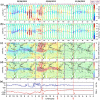
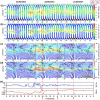
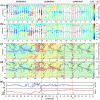
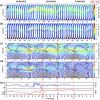
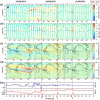
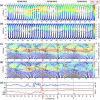
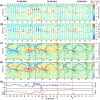

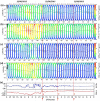
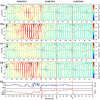
References
-
- Afraimovich, E. L. , Astafyeva, E. I. , Demyanov, V. V. , Edemskiy, I. K. , Gavrilyuk, N. S. , Ishin, A. B. , … Zhivetiev, I. V. (2013). A review of GPS/GLONASS studies of the ionospheric response to natural and anthropogenic processes and phenomena. Journal of Space Weather and Space Climate, 3, A27 https://doi.org/10.1051/swsc2013049 - DOI
-
- Afraimovich, E. L. , Astafyeva, E. I. , Kosogorov, E. A. , & Yasyukevich, Y. V. (2011). The mid‐latitude field‐aligned disturbances and their effects on differential GPS and VLBI. Advances in Space Research, 47(10), 1804–1813. https://doi.org/10.1016/j.asr.2010.06.030 - DOI
-
- Astafyeva, E. , Yasukevich, Y. , Maksikov, A. , & Zhivetiev, I. (2014). Geomagnetic storms, super‐storms and their impact on GPS‐based navigation. Space Weather, 12, 508–525, https://doi.org/10.1002/SW001072 - DOI
-
- Astafyeva, E. , Zakharenkova, I. , & Alken, P. (2016). Prompt penetration electric fields and the extreme topside ionospheric response to the 22–23 June 2015 geomagnetic storm as seen by the Swarm constellation. Earth, Planets and Space, 68(1), 152 https://doi.org/10.1186/s40623-016-0526-x - DOI
-
- Astafyeva, E. , Zakharenkova, I. , & Doornbos, E. (2015). Opposite hemispheric asymmetries during the ionospheric storm of 29–31 August 2004. Journal of Geophysical Research, 120(1), 697–714. https://doi.org/10.1002/2014JA020710 - DOI
LinkOut - more resources
Full Text Sources
Other Literature Sources
Research Materials
